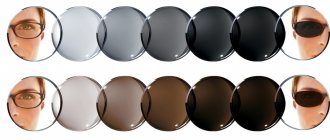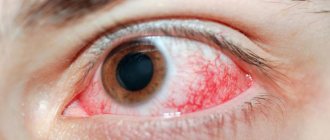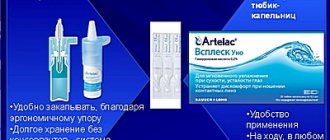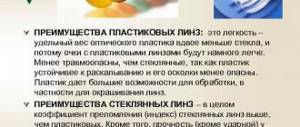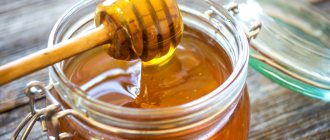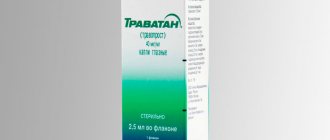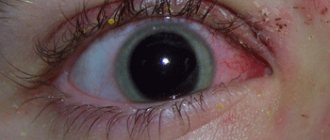A refractometer is a convenient tool needed to determine the concentration of a variety of solutions. An optical device reproduces results due to the refraction of light rays.
There are three main varieties. A refractometer can be laboratory, industrial or portable. Stationary laboratory equipment has large dimensions, high power and guaranteed measurement accuracy. It is used in diagnostic centers and in production to control all kinds of technological procedures.
Portable devices are considered universal and can be used for their intended purpose in laboratories and outside them. They are:
- Manual. This is a simple technique for mobile use that does not contain any batteries (rechargeable batteries, replaceable batteries) or electronic boards. It is used in textile production, in the food and oil industries, and at home. It is affordable, easy to transport over long distances, and lightweight.
- Digital. This is more advanced equipment with a liquid crystal display. The device is often equipped with additional functionality (analysis of density, light refractive index, etc.).
All equipment differs in size, power, manufacturer, body shape, and price. It is used in pharmaceuticals, food industry, and mechanical engineering. In the medical industry, refractometers are needed to determine:
- protein in blood plasma;
- drug concentrations;
- urine density.
A refractometer monitors the parameters of various substances by measuring the amount of light refraction. Optical technology got its name back in the 18th century, when it was introduced into science by Isaac Newton.
Principle of operation
A refractometer is a specialized semi-automatic device that directs infrared radiation into the human eye. It measures using the following indicators:
- wave intensity;
- wavelength;
- settlement system.
As a result, the device provides data on the refraction of each eye separately. This is a concept that denotes the quality of refraction of a light ray in the eyeball, projecting it to certain points on the retina, in front of or behind it.
The device operates in the following ways:
- the device generates a thin beam of infrared radiation, which is directed into the human pupil;
- the red ray passes through the pupil, cornea, lens, vitreous body, after which it is projected into the retina and reflected from it;
- a beam of light passes through the internal structures of the eye in the opposite direction and is captured by the device;
- the device records the wavelength that was reflected on the retina.
The device displays data on the monitor, and the ophthalmologist can print it out to enter it into the patient’s medical history.
Calibrating and preparing the refractometer for use
Before using a refractometer, it must be calibrated. Some models require a special liquid for this, but most can be calibrated using distilled water.
Let's consider the last method in more detail.
If you look into the eyepiece of any refractometer without calibration fluid, its scale will be colored only blue (Fig. 1).
To calibrate the device, 2-3 drops of distilled water are applied to the main prism (it is convenient to do this with a pipette). After closing the protective glass, the water should be evenly distributed over the entire surface of the prism - without air bubbles or dry spots.
After 30 seconds, sufficient for the sample to adapt to the ambient temperature, the refractometer is pointed towards natural daylight (fluorescent light is not allowed). In this case, a scale with areas of blue and white colors is displayed in the eyepiece (Fig. 2).
The main task of calibration is to achieve coincidence of the boundaries of these two sections at the 0.0 mark (Fig. 3) by adjusting the calibration screw.
After completing the adjustment, carefully wipe the prism with a soft cloth.
When to use
The device is used during the initial visit to the ophthalmologist. He must know whether the light beam passes normally through the eyeball in order to determine the refractive power. Once a diagnosis is made, the device is used to identify the patient's vision status as they age or during treatment.
The device detects the following diseases:
- farsightedness - the projection of a ray of light is not on the retina, but behind it, therefore the wavelength is longer than necessary;
- myopia - projecting a beam of light in front of the retina, which makes the wavelength shorter;
- astigmatism - a ray of light incorrectly passes through the refractive elements of the eye, bifurcates, and is therefore projected on the retina, as well as in front of or behind it.
It is recommended that patients who wear contact lenses or glasses undergo periodic testing. If deterioration in vision quality is detected early, treatment can be started sooner. Refractometry is important here, since measurement using diagnostic tables is impossible; if the quality of vision deteriorates, the patient will not see the first line of the table both at minus 2 diopters and at minus 8.
How to properly use a refractometer for maximum accuracy
A refractometer is a great tool that allows a brewer to determine the gravity of their wort with just one drop. You will not need to spend 150-200 ml each time. wort, as is done when measuring with a hydrometer. A drop of wort falls onto the surface of the lens, and a transparent plate is pressed on top, distributing the liquid evenly throughout the lens. The refractometer is then raised up to the light source and you look through it, like a telescope.
The photo shows the cheapest refractometer for $40 made in China. With it you get what you pay for. But there are also expensive digital refractometers that more accurately determine and display their readings on the dial.
There are some guidelines for using a refractometer correctly, otherwise it may disappoint you:
- The refractometer must be calibrated to zero in water. Calibration may be required before each use.
- Ignore the Specific Gravity (SG) scale if your model has one - just pay attention to the Brix scale. The relationship between Brix and specific gravity is not linear!
- Like hydrometers, refractometer readings depend on temperature. Some models support ATC - automatic temperature correction, and have varying degrees of success in this. I allow my samples to cool to below 40°C before using them to avoid getting burned.
- Cheap refractometers are not always consistent in their measurements. I took 5 measurements of one wort, and only then calculated the average value. The difference was +/- 10% between measurements! Well, here's the catch. You get what you pay for and this device was a gift to me.
Refractometers and wort:
The convenience of refractometers depends on the price, since the design of refractometers is not so simple when it comes to measuring wort.
Refractometers measure the angle of refraction of light as it passes through a solution. They are usually calibrated using a solution of sugar and water. However, the wort has different densities and contains more complex sugars, which changes the refractive index. Any refractometer measurements of wort must be corrected using the 'wort correction factor' . For the home brewer, the wort correction factor is a specific tool that must be determined accurately when measuring wort samples.
We have a complete guide, including spreadsheets for entering measurements that will help you determine your wort correction factor.
To clear up any confusion in terminology, we have decided to call the wort Brix measurement a refractometer: Brix IRA (wort refractive index). Only after dividing Brix IPA by the wort correction factor will we calculate the actual value in Brix/Plateau. Keep in mind that Brix and Plateau are essentially the same, and differ by 3 decimal places, so the resulting value can be considered Plateau (°P).
Refractometers and beer (alcohol):
In the presence of alcohol, accurate refractometer measurements are even more difficult to obtain. Alcohol changes refraction even more strongly. The good news is that this can be corrected if the initial density (ID) is known. The following equation has been identified regarding this issue.
KP = 1.0000 – 0.0044993*RIi + 0.011774*RIf + 0.00027581*RIi² – 0.0012717*RIf² – 0.0000072800*RIi³ + 0.000063293*RIf³
Application of refractometer measurements on our website:
Using our software will greatly facilitate the use of your refractometer.
- See our online refractometer calculator.
- We have a complete guide with a table for finding your refractometer's wort correction factor.
How to use a refractometer
There is no specific preparation of the patient for the procedure. This is due to the fact that it is carried out without contact with the eyeball. It is recommended to clean your eyes before the test so that there is no purulent discharge in them in case of bacterial conjunctivitis. It may distort the research.
The doctor may recommend eliminating pupil accommodation temporarily with the help of medications. For this, drops like Atropine are used. Using the method, the doctor can examine not only refractometry, but also look at the fundus of the eye.
The doctor prescribes the drug 2-3 days before the procedure to eliminate the risk of pupil constriction when exposed to bright colors.
The study is carried out in a sitting position. A person places his chin in a special notch, which is a limiter. He focuses his gaze on one point, his head should not move. Next, a red beam is directed into the eye, and the received data is processed using a semi-automatic analyzer.
Even people with highly sensitive eyes can undergo the test, as it takes no more than 2 minutes.
Design of a hand-held refractometer
The main optical component of the refractometer, onto which the test substance is applied, is the main prism. It is made of a material with a high refractive index, so a ray of light passing through it is deflected at a large angle. Through a lens system it penetrates onto a scale, which is a graduated circle.
At different angles of refraction, the beam appears higher or lower on the scale, leaving one of its parts light and the other dark. The refractive index is determined by the position of the interface. This indicator directly depends on the composition of the analyzed solution and its density.
Some refractometer models also take into account the influence of temperature: inside their body there is a bimetallic plate connected to other components. Under different thermal conditions, it contracts or expands, smoothly moving the optical system. In this way, the effect of temperature on the refractive index is compensated.
The ATC (Automatic Temperature Compensation System) function in refractometers is extremely desirable, since otherwise the obtained values will have to be recalculated depending on the ambient temperature using special tables.
Decoding the results
After completing the study, the doctor receives a form with the following indicators:
- SPH (sphere) – a value that indicates the presence of a pathological condition (astigmatism, myopia, hypermetropia);
- CYL (cylinder) - an indicator on the basis of which diopters for glasses and contact lenses are selected;
- AXIS – for lens installation;
- PD is the distance between the pupils required for the selection of optical aids.
If you use the latest generation device, the number of indicators is more extensive. It measures all the data that is necessary to prescribe lenses or glasses. The device is necessary to eliminate medical errors during fundus examination or use of diagnostic tables. Since the device is a non-invasive technique, it can be used by absolutely all categories of patients. There are no contraindications.
Types of refractometers
The term “refraction” itself (Latin “refractus” - refracted) was introduced into scientific use at the beginning of the 18th century by Newton.
Depending on the design and purpose, refractometers are divided into stationary (industrial, laboratory) and portable (digital, hand-held).
Large stationary refractometers, characterized by high accuracy and design complexity, are used in large industrial enterprises and in chemical laboratories.
With their help, technological processes are controlled almost in real time, observations are made of the state of a particular liquid, and the concentration of various substances is determined. Such devices are often used to control the mixing or evaporation process in food production plants.
Portable refractometers are compact, portable devices that can be used both indoors and in the field.
Digital types of devices have liquid crystal screens on which measurement results are displayed. In addition, they have many additional functions: for example, they can determine the density of a substance, apply different units of measurement, take into account the ambient temperature, etc.
Handheld refractometers do not have electronic circuits or batteries. These easy-to-use devices can be used both in production and at home. Thanks to their accuracy, convenience and affordable price, hand-held instruments have gained wide popularity.
The principle of operation of a refractometer. Path of refractometer rays in transmitted and reflected light.
The principle of operation of a refractometer is to measure the limiting angle of refraction at the interface of the liquid under study and a glass prism with a known refractive index. In the first method - in transmitted light (Fig. a) - a beam of light rays emitted by a light source S is directed using a mirror Z to the face AB of a prism ABC. Having refracted at face AB, the rays pass into prism ABC and reach face AC. But since this face is made matte and therefore causes light scattering, the rays will enter the liquid and reach the face DE at different angles. Obviously, the greatest possible angle of incidence for rays incident on the face of DE is 90°. These DE sliding along the surface. The rays after refraction determine the limit of light propagation, since they correspond to the limiting angle of refraction. In the second method - in reflected light (Fig. b) - a beam of light rays emitted by a source S is directed to the face DF using a mirror Z. Since the DF face is also matte, the rays enter the DEF prism at different angles. In this case, the rays entering the DEF prism and reaching the DE face have to move from an optically denser medium (glass) to an optically less dense medium (liquid). Rays incident on the surface DE at an angle less than the limiting one will pass into the liquid and into the LAN prism. Rays whose angle of incidence is greater than the limiting one will undergo total internal reflection. The rays, the direction of which corresponds to the value of the limiting angle, determine the interface between light and shadow. In the case of colorless and slightly colored liquids, it is convenient to use the first method. When measuring the refractive index of intensely colored liquids that strongly absorb light, it is better to use the second method.
Biological membranes, their structure and functions. Membrane models.
Membranes are flat or curved layers up to 9 nm thick, formed by molecules of proteins, fats (lipids) and carbohydrates. Membranes are cellular structures that are ubiquitous in living cells and regulate the exchange between the cell and the external environment ( cellular
or
plasma membranes
), or between different parts of the cell (
intracellular membranes
).
The basis of the membrane is formed by a double layer of lipids. Protein molecules are built into this layer, giving specific properties to various parts of the membranes, and thereby allowing the latter to take part in a variety of metabolic processes.
Lipid molecules are packed into a layer so that hydrophobic
parts (
fat tails
) of these molecules are separated from water, while
hydrophilic
parts (
polar heads
) are immersed in it.
A double layer of lipids forms a kind of two-dimensional liquid with a viscosity close to that of liquid oil, so lipid and protein molecules easily move in the plane of the layer ( lateral diffusion
).
Under certain conditions (lowering temperature), processes can occur in membranes, accompanied by a change in the orientation of the polar heads and (or) solidification of the carbohydrate tails of lipids, which leads to a change in the functional properties of the membrane. The most common is the liquid mosaic membrane model
: More or less submerged proteins float in the lipid layer.
1-surface proteins, 2-semi-submerged proteins, 3-fully submerged proteins, 4-proteins that form an “ion channel” 5
Membranes perform two important functions:
— matrix (they are a matrix, the basis for holding proteins that perform various functions);
— barrier (protect the cell and its individual parts from the penetration of unwanted particles).
Transport of particles through membranes. Fick's equation. Application of Fick's equation to a biological membrane. Nernst-Planck equation.
An important characteristic of membranes is their ability to pass or not pass molecules, atoms and ions. These questions relate to transference phenomena.
Let us consider the most important phenomena for biological membranes: substance transfer ( diffusion
) and charge transfer (
electrical conductivity
). In biophysics the term “particle transport” is also used. The basic diffusion equation has the form:
This is the Fick equation: I - particle flux density, D - diffusion coefficient D =___ __________, σ - average distance between molecules, m - mass of a molecule, n - concentration of molecules, c = m * n - mass concentration, τ
— average residence time of a molecule
The best digital refractometers
Such models are distinguished by ease of use and accuracy of measurements, but they are not cheap. But digital instruments do not require complex calibration and take only a few seconds to analyze.
Milwaukee MA871
4.9
★★★★★
editorial assessment
97%
buyers recommend this product
This device can convert units of measurement into a convenient format, making it easier to read readings. Calibration is carried out using deionized or distilled water.
The refractometer determines the refractive index a few seconds after placing the sample with an error of up to 0.2% (working range is 0-85%).
Low battery level indication reduces the likelihood of the device suddenly shutting down due to a dead battery. The device stops working after 3 minutes of inactivity to save energy.
Advantages:
- durable housing with protection class IP65;
- economical energy consumption and auto shut-off function;
- large display is easy to read;
- status indication.
Flaws:
- heavy.
The Milwaukee Refractometer is suitable for quickly determining the concentration of sugar and industrial liquids. Such a device will be useful for analyzing juices, aqueous solutions and special compounds.
HM Digital RCM-1000BT
4.9
★★★★★
editorial assessment
94%
buyers recommend this product
The model has a memory function and saves the results of the last 20 measurements for further analysis and processing. The received data can also be transferred to a mobile device thanks to Bluetooth support. The mobile application for Android and iOS allows you to maintain a database and create charts.
The large LCD display with adaptive backlight makes it easy to work at any time of the day. To save energy, it has an automatic shutdown function after 2 minutes of inactivity. The operating temperature range is 10-40 °C. The weight of the device itself does not even reach 150 g.
Advantages:
- mobile application support;
- fast measurement with high accuracy;
- memory function;
- moisture-resistant housing;
- light weight.
Flaws:
- high price;
- narrow specialization.
HM Digital RCM-1000BT is designed to measure the concentration of coffee in drinks. An excellent choice for amateur and professional use.
READ ALSO
11 Best Waste Shredders
Atago PAL-S
4.8
★★★★★
editorial assessment
90%
buyers recommend this product
The model has a continuous measurement mode, which provides accurate information when working with the most difficult samples to analyze. To control the correctness of data for each range, you can use special liquids.
With dimensions of 5.5x3x11 cm, the device weighs 100 grams and is powered by two AAA batteries. There is a special indicator on the compact screen that promptly signals the need to replace them. The device fits comfortably in the hand and has an intuitive control panel.
Advantages:
- high accuracy;
- light weight and compactness;
- charge level indication;
- convenient control.
Flaws:
- high energy consumption.
Atago PAL-S is designed for the analysis of high-viscosity food products: condensed milk, sauces, jams, purees, etc.
Hanna HI98319
4.7
★★★★★
editorial assessment
85%
buyers recommend this product
The model is powered by a CR2032 battery. In addition to this, the device comes with a standard calibration package and a protective case. The auto-off function saves battery and can be configured if necessary.
Permissible ambient temperature is 0-50°C. The refractometer weighs 68 grams, and its small size makes it easy to use on the go. An easy-to-read LCD display and control using two buttons guarantee comfortable operation of the device without prior preparation.
Advantages:
- compactness and lightness;
- economical energy consumption;
- convenient control;
- durability.
Flaws:
- fragile body.
Hanna HI98319 will be useful for determining the salinity of water and is suitable for quick measurements.
